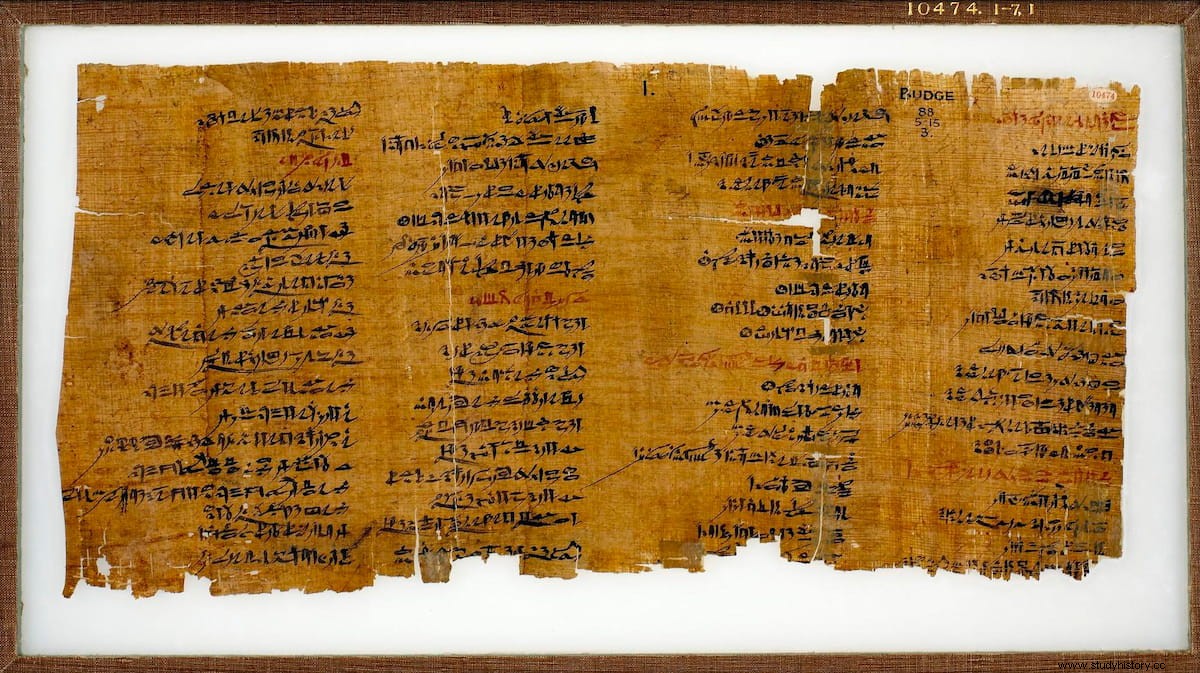One of the most profusely cultivated literary genres by the ancient Egyptians is the sebayt , which literally means teachings or instructions . Not only that but many sebayt they are among the earliest texts of Ancient Egyptian literature. It is about moral advice and guidelines to face life, usually from a father to his son.
Most of these texts are preserved on papyrus scrolls which are copies of copies of copies, etc. of the originals. But the genre was so successful that even in Roman times new compositions were still being written.
Among the best known texts are the Instructions of Ptahhotep , the chaty of Pharaoh Dyedkara Isesi, whose oldest copies date from around 2050 BC; the Kagemni Instructions , from about 1950 BC; and the Amenemhat Instructions , written by the pharaoh of that name who reigned between 1991 and 1961 BC. for his son Sesostris, a poem that was still being read in Egypt in the 5th century BC, 1,500 years later.

In all of them, pragmatism and practical advice stand out, something that in the later Instructions of Amenemope it becomes piety, integrity and honesty above all else. It also differs from other instructions in which the text is explicitly organized in 30 numbered chapters (it is the oldest poem with numbered chapters), preceded by an introduction and finished with a colophon (which has come down to us in its entirety, through several versions in different papyri).
It was written by Amenemope, a scribe and sage who lived during the 20th dynasty of the Egyptian New Kingdom in Ipu (later Greek Panopolis and present-day Ajmin). In the text he gives advice to his son to have a happy life, emphasizing the inner qualities, attitudes and behaviors necessary to achieve it.
Thus, he moves away from material success to focus on achieving inner peace through patience and acceptance of the will of the gods. He advises his son to defend the weakest, to respect the elderly, widows and the poor, while condemning abuses of power and authority.

Throughout the 30 chapters he draws a distinction between the quiet man who goes about his own business without calling attention to himself or demanding anything, and the hotheaded man who constantly annoys and fights with others over unimportant things. The former will receive divine blessing and attain happiness, and the latter is headed for destruction.
Amenemope advises his son to be modest, self-controlled, generous, and scrupulously honest. On the other hand, it asks you to flee from pride, impetuosity, fraud and lies, because trying to obtain advantages to the detriment of others only leads to misfortune and confuses the plans of Maat, the goddess of balance and cosmic harmony, the truth and justice.
The text influenced other Near Eastern cultures, who incorporated some of the advice into their own books. But especially its influence can be traced to the biblical books of Proverbs, Ecclesiastes and Ecclesiasticus, possibly through a Hebrew translation.

In the case of Proverbs the verses from 22:17 to 23:11 are so similar to the instructions of Amenemope that few doubt that these are literal copies. And what are some Egyptian texts doing in a book of the Bible?
The date of composition of the instructions of Amenemope It is around 1100 BC, which is earlier than any part of the Bible. That is why Egyptologists such as James Henry Breasted and others believe that the Hebrews read and incorporated the text of Amenemope into their ethical and religious development. According to Breasted, it is equally obvious that in numerous other places in the Old Testament, not only in the Book of Proverbs, but also in the Hebrew law, in Job,…in Samuel and Jeremiah, the wisdom of Amenemope is the source of ideas, figures, moral norms, and especially of a certain warm and human spirit of goodness .
According to Miriam Lichtheim, it was during the Ramesside era (precisely when the text of Amenemope was composed) when the tribes of Israel became a nation, and much of the Israelite knowledge of Egyptian origin, as reflected in the Bible, was the result of contacts during this period .
The Egyptologist Adolf Erman published in 1924 an extensive list of correspondences between the texts of Amenemope and the Book of Proverbs. Furthermore, Erman used the instructions to amend a difficult reading in the text of Proverbs 22:20, where the Hebrew word shilshom (three days ago ) seemed like a copyist's error since it did not fit the context. Erman suggested that the word sheloshim (thirty ) not only made sense in context, but produced a close parallel between the two texts, with the now restored thirty sayings of Proverbs 22:20 which correspond exactly to the 30 numbered chapters of Amenemope.

Today most scholars believe that there is a connection between the two works, and that Amenemope's influence on the Proverbs is clear. A minority is divided between those who believe that the influence is the other way around, and those who believe that both texts derive from a lost Semitic source.
Some texts of both compared:
The most complete text of the Instructions of Amenemope it is Papyrus 10474 which is preserved in the British Museum. But there are fragments in at least 7 other papyri spread across museums in Turin, Cairo, Moscow, Paris and Stockholm.
